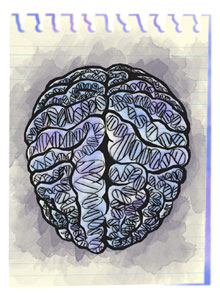New Insights on DNA
 UAB neurobiology chair David Sweatt’s own research has contributed greatly to the current understanding of the cellular events underlying neuroplasticity—discoveries that earned him the 2012 Fondation IPSEN neuronal plasticity prize, a prestigious international award. His lab continues to push the field forward, investigating the role of a newly discovered DNA base in learning and memory.
UAB neurobiology chair David Sweatt’s own research has contributed greatly to the current understanding of the cellular events underlying neuroplasticity—discoveries that earned him the 2012 Fondation IPSEN neuronal plasticity prize, a prestigious international award. His lab continues to push the field forward, investigating the role of a newly discovered DNA base in learning and memory.
Three years ago, scientists discovered that, in addition to adenine (A), thymine (T), cytosine (C), and guanine (G) bases, mammalian DNA consists of additional bases, including 5-hydroxymethylcytosine (5-hmC). Embryonic stem cells and regions of the adult brain involved in learning and memory have very high levels of 5-hmC, Sweatt says. For embryonic stem cells, the base appears to play an important role in allowing them to develop into any kind of cell. In the brain, “our idea is that 5-hmC makes the neurons highly plastic and highly adaptable so that they can receive signals and trigger long-lasting functional changes,” Sweatt explains.
These basic science studies may eventually point the way to new treatments for a host of diseases, as well as medications that can improve healthy brains as well. “The question now is how far can we take some of these exciting new things?” Sweatt says.